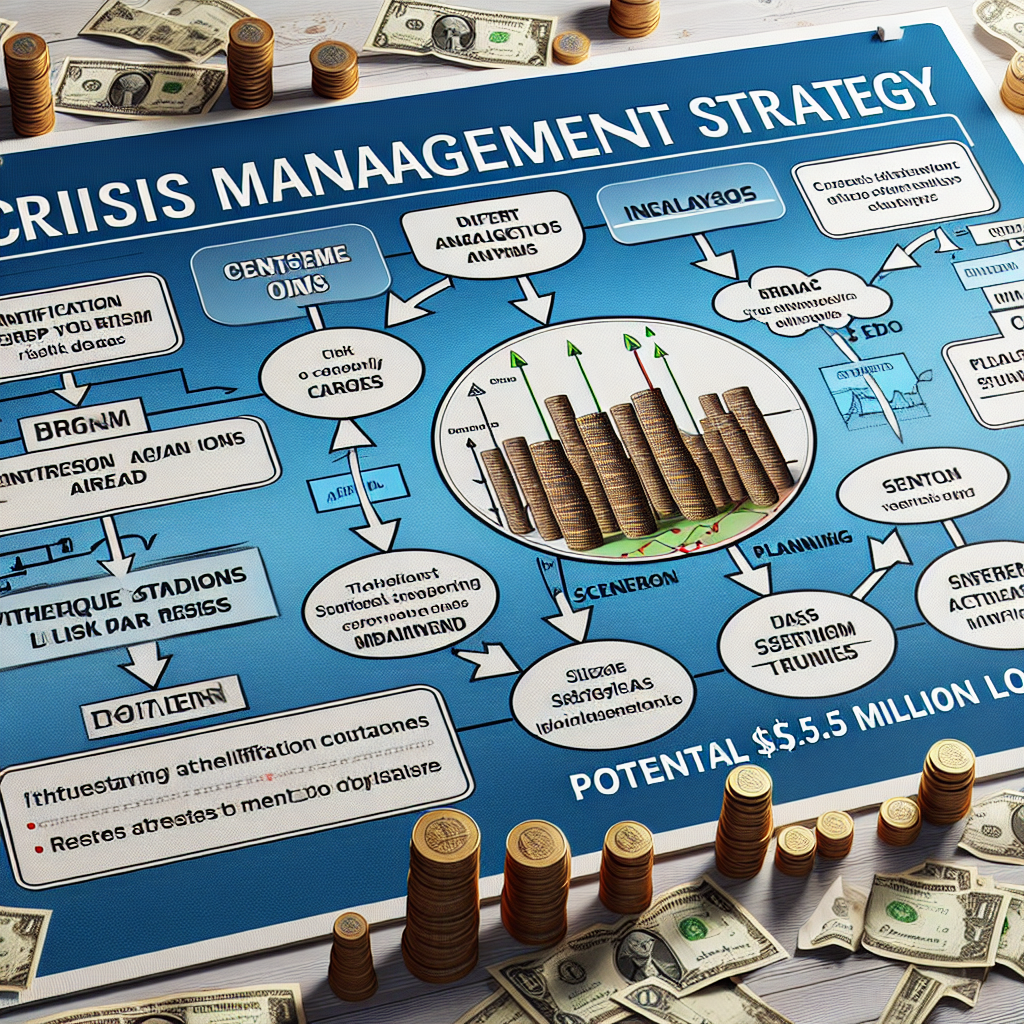-
Table of Contents
- How Would You Handle a Potential $5.5 Million Loss for Our Investors?
- Understanding the Nature of the Loss
- Market Volatility
- Poor Investment Choices
- External Economic Factors
- Immediate Response Strategies
- 1. Communicate Transparently with Investors
- 2. Reassess and Diversify the Portfolio
- 3. Implement Stop-Loss Orders
- Long-Term Strategies
- 1. Conduct a Thorough Risk Assessment
- 2. Develop a Contingency Plan
- 3. Invest in Financial Education
- Case Studies
- Case Study 1: The 2008 Financial Crisis
- Case Study 2: The COVID-19 Pandemic
- Statistical Insights
- Diversification
- Stop-Loss Orders
- Conclusion
How Would You Handle a Potential $5.5 Million Loss for Our Investors?

In the world of finance and investment, the potential for significant losses is an ever-present risk. A potential $5.5 million loss can be daunting, but with a strategic approach, it is possible to mitigate the impact and protect investor interests. This article explores various strategies to handle such a scenario, drawing on real-world examples, case studies, and statistical data to provide a comprehensive guide.
Understanding the Nature of the Loss
Before diving into strategies, it is crucial to understand the nature of the potential loss. Is it due to market volatility, poor investment choices, or external economic factors? Identifying the root cause will help in formulating an effective response.
Market Volatility
Market volatility can lead to significant fluctuations in investment value. For instance, the 2008 financial crisis saw the S&P 500 index drop by nearly 57% from its peak, causing massive losses for investors.
Poor Investment Choices
Sometimes, losses stem from poor investment decisions. For example, the collapse of Enron in 2001 resulted in a loss of $74 billion in shareholder value due to fraudulent accounting practices.
External Economic Factors
External factors such as geopolitical events, natural disasters, or pandemics can also impact investments. The COVID-19 pandemic, for instance, led to a global economic downturn, affecting various sectors and causing significant losses.
Immediate Response Strategies
Once the nature of the loss is identified, immediate response strategies should be implemented to mitigate the impact.
1. Communicate Transparently with Investors
Transparency is key in maintaining investor trust. Inform investors about the potential loss, its causes, and the steps being taken to address it. This can be done through:
- Regular updates via emails or newsletters
- Webinars or conference calls
- Detailed reports and analysis
2. Reassess and Diversify the Portfolio
Diversification is a fundamental risk management strategy. Reassess the current portfolio and consider reallocating assets to reduce exposure to high-risk investments. For example:
- Shift investments from volatile stocks to more stable bonds
- Invest in different sectors to spread risk
- Consider alternative investments such as real estate or commodities
3. Implement Stop-Loss Orders
Stop-loss orders can help limit losses by automatically selling an asset when it reaches a certain price. This strategy can prevent further decline in investment value.
Long-Term Strategies
In addition to immediate responses, long-term strategies are essential to recover from the loss and prevent future occurrences.
1. Conduct a Thorough Risk Assessment
Regular risk assessments can help identify potential threats and vulnerabilities. This involves:
- Analyzing market trends and economic indicators
- Evaluating the performance of current investments
- Assessing the impact of external factors
2. Develop a Contingency Plan
A well-defined contingency plan can provide a roadmap for handling future losses. This plan should include:
- Clear guidelines for communication with investors
- Predefined steps for portfolio reassessment and reallocation
- Strategies for accessing emergency funds or credit lines
3. Invest in Financial Education
Educating investors about financial markets and risk management can empower them to make informed decisions. This can be achieved through:
- Workshops and seminars
- Online courses and webinars
- Regular updates on market trends and investment strategies
Case Studies
Examining real-world case studies can provide valuable insights into effective loss management strategies.
Case Study 1: The 2008 Financial Crisis
The 2008 financial crisis serves as a stark reminder of the importance of risk management. Many investors suffered significant losses due to the collapse of major financial institutions. However, those who diversified their portfolios and invested in safer assets such as government bonds were able to mitigate their losses.
Case Study 2: The COVID-19 Pandemic
The COVID-19 pandemic caused unprecedented economic disruption. Companies that quickly adapted by diversifying their investments and implementing cost-cutting measures were better positioned to weather the storm. For example, tech companies that shifted to remote work and invested in digital infrastructure saw significant growth despite the economic downturn.
Statistical Insights
Statistics can provide a clearer picture of the impact of various strategies on investment performance.
Diversification
According to a study by Vanguard, a diversified portfolio of 60% stocks and 40% bonds had an average annual return of 8.7% from 1926 to 2019, compared to 10.2% for an all-stock portfolio. However, the diversified portfolio had significantly lower volatility, reducing the risk of large losses.
Stop-Loss Orders
A study by the University of California found that stop-loss orders can reduce the average loss per trade by 50%, highlighting their effectiveness in limiting losses.
Conclusion
Handling a potential $5.5 million loss for investors requires a multifaceted approach. By understanding the nature of the loss, implementing immediate response strategies, and developing long-term plans, it is possible to mitigate the impact and protect investor interests. Transparency, diversification, and education are key components of an effective loss management strategy. Real-world examples and statistical data further underscore the importance of these strategies in navigating financial challenges.
In summary, while a potential $5.5 million loss is significant, it is not insurmountable. With a proactive and strategic approach, investors can navigate through the turbulence and emerge stronger on the other side.








